
Feel free to add tags, names, dates or anything you are looking for
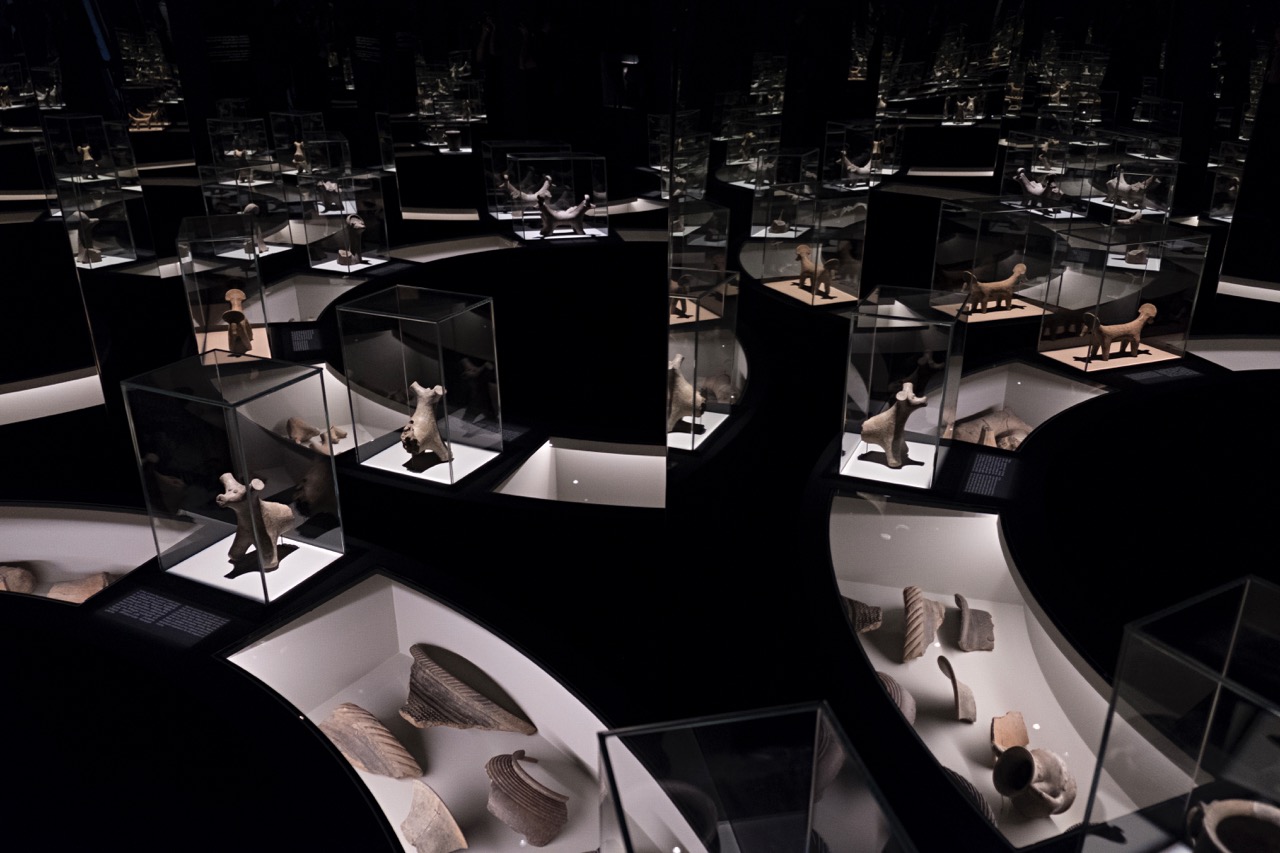

In the old Georgian language, Vani implies a residence, dwelling, or monastery. As a name signifying a location in Imereti, it first appeared in recorded data in the 1870s. This is how the "Vani Gospels" inscription, as well as the descriptions of the German traveler Guldenstedt, refer to the village, which is now known as "Upper Vani" and is famous for the Archangel Church erected during the 11th and 12th centuries. According to Vakhushti Bagrationi, an 18th-century Georgian historian and geographer, Vani was known as "Sachino."
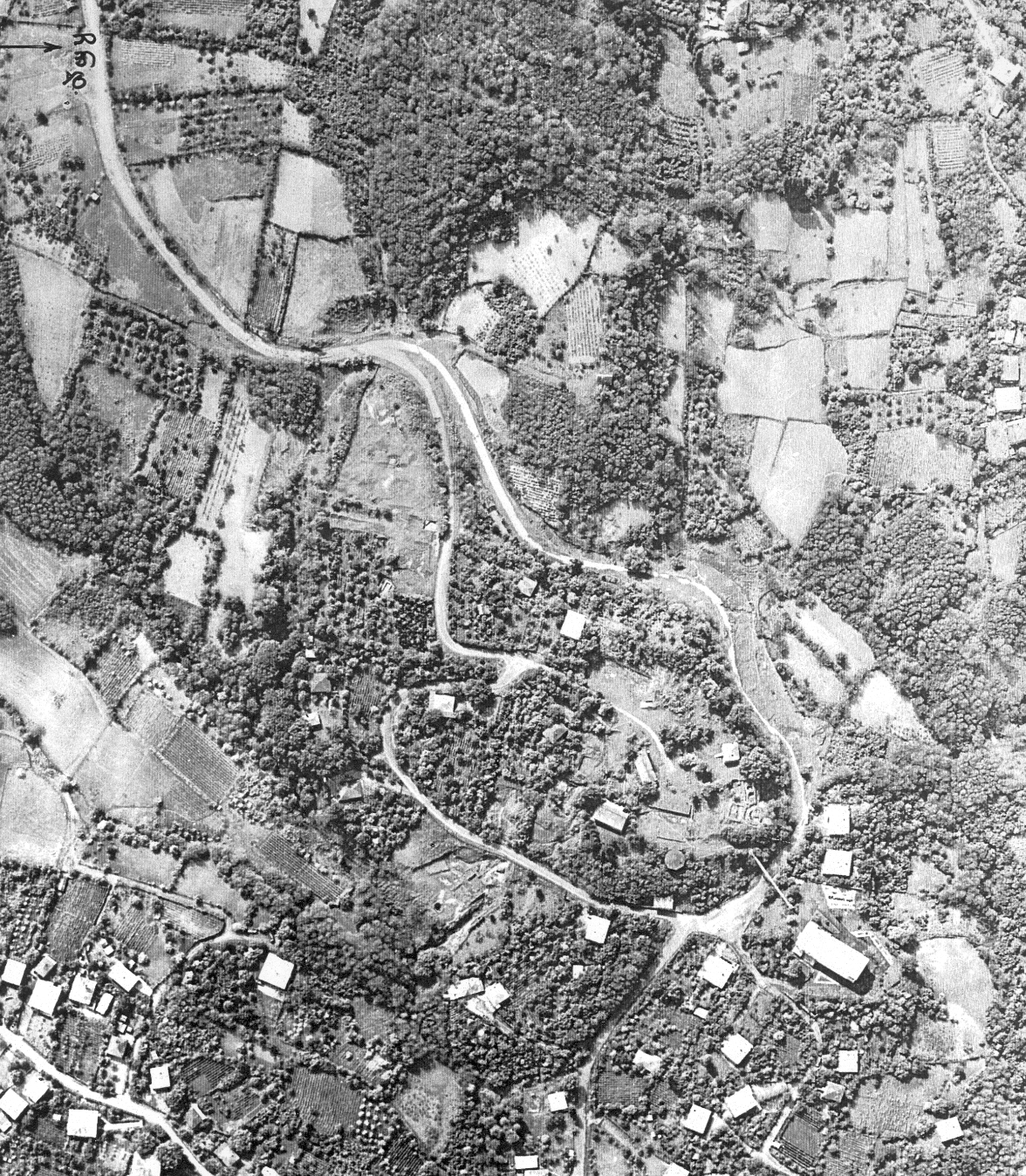
Site aerial photograph. Vani, Georga.
In this place with its unique name, located in the heart of mythical Colchis, myth and reality converge in the Vani Archeological Museum. It all began 150 years ago. Beyond the “Akhvlediani Hill” in Vani, it is rare to find a place where torrential rain might wash gold objects down the slopes, as the newspaper Droeba reported in 1876. It was this "golden rain" and the precious artifacts occasionally discovered by locals – first documented in the 1940s – that sparked archeological interest in Vani. The renowned Georgian writer and public figure Giorgi Tsereteli was the first to call for an archeological study of Vani during a meeting of the Preparatory Committee for the Archeological Congress, held in Tbilisi on November 18, 1880. In 1889, excavations in Vani were begun by A. Stoyanov, acting under the instructions of the Moscow Archeological Society. Stoyanov, a Bulgarian-born local historian and director of the Kutaisi and later Batumi gymnasiums, discovered “Greek-era tombs” and gold objects, although only written accounts of these findings have survived. That same year, the French scholar Jacob also conducted excavations in Vani and uncovered the ruins of the church.
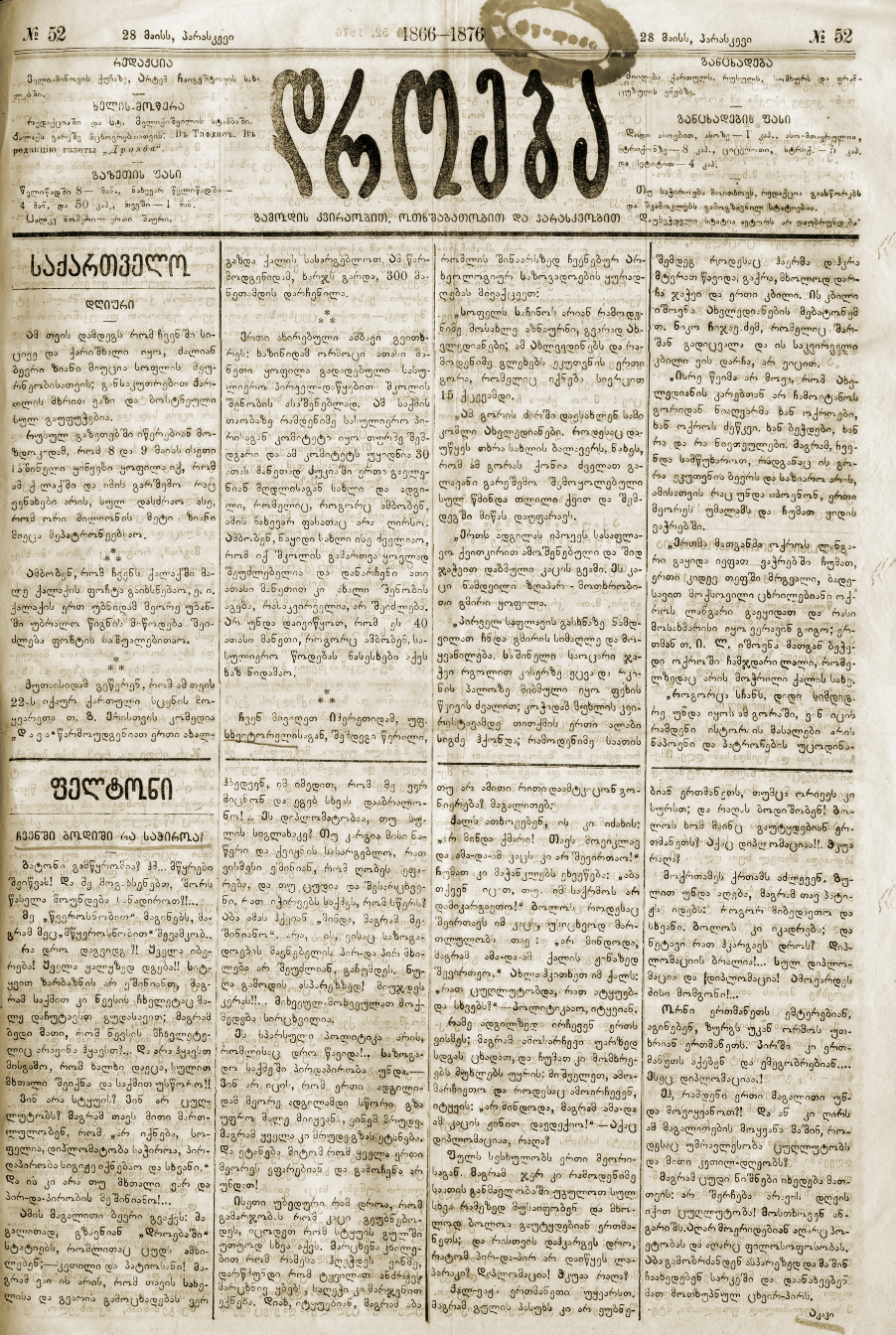
Report in "Droeba" newspaper, 1876
In 1896, systematic archeological excavations in Vani were launched by Ekvtime Takaishvili, the founder of Georgian archeology, later canonized by the Georgian Orthodox Church for his efforts in preserving the nation’s cultural heritage. He was the only Georgian archeologist authorized by the Moscow Archeological Commission to conduct excavations in Georgia. Takaishvili carried out the first scientific excavations in Vani, established the chronology of the findings, and recognized the site's immense scientific value. He wrote: “The ancient city of Vani, with its remains, lies buried in the land of the Akhvlediani family. Wherever one digs on this hill, one encounters layers of cultural soil, stone walls, various buildings, fragments of clay vessels and pitchers. Stone stairs and the remains of old structures also occasionally emerge.” Takaishvili was also the first to gather the previously discovered objects in Vani and formally incorporate them, along with his own finds, into the national treasury of Georgia. Today, these invaluable discoveries are displayed in the renovated Vani Archeological Museum. After a long hiatus, exploratory work resumed in Vani in 1936 under the direction of Academician Niko Berdzenishvili. In 1947, the Institute of History, Archeology and Ethnography of the Georgian Academy of Sciences organized the first official archeological expedition to Vani, led by Georgia’s first female archeologist, Nino Khoshtaria. Extensive excavations and a comprehensive scientific study of Vani and its surroundings began in 1966 under the leadership of Otar Lordkipanidze.
Generations of archeologists have gained proficiency in Vani. The Vani Archeological Expedition – led by its core members Otar Lordkipanidze, Rusudan Puturidze, Vera Tolordava, Giorgi Lezhava, Marine Mitsishvili, Nana Matiashvili, Ana Chkonia, Elene Gigolashvili, Darejan Kacharava, Marine Pirtskhalava, Guram Kipiani, Gela Gamkrelidze, Vakhtang Licheli, Guram Kvirkvelia, and Dimitri Akhvlediani – ushered in a new era of archeological research in Georgia.
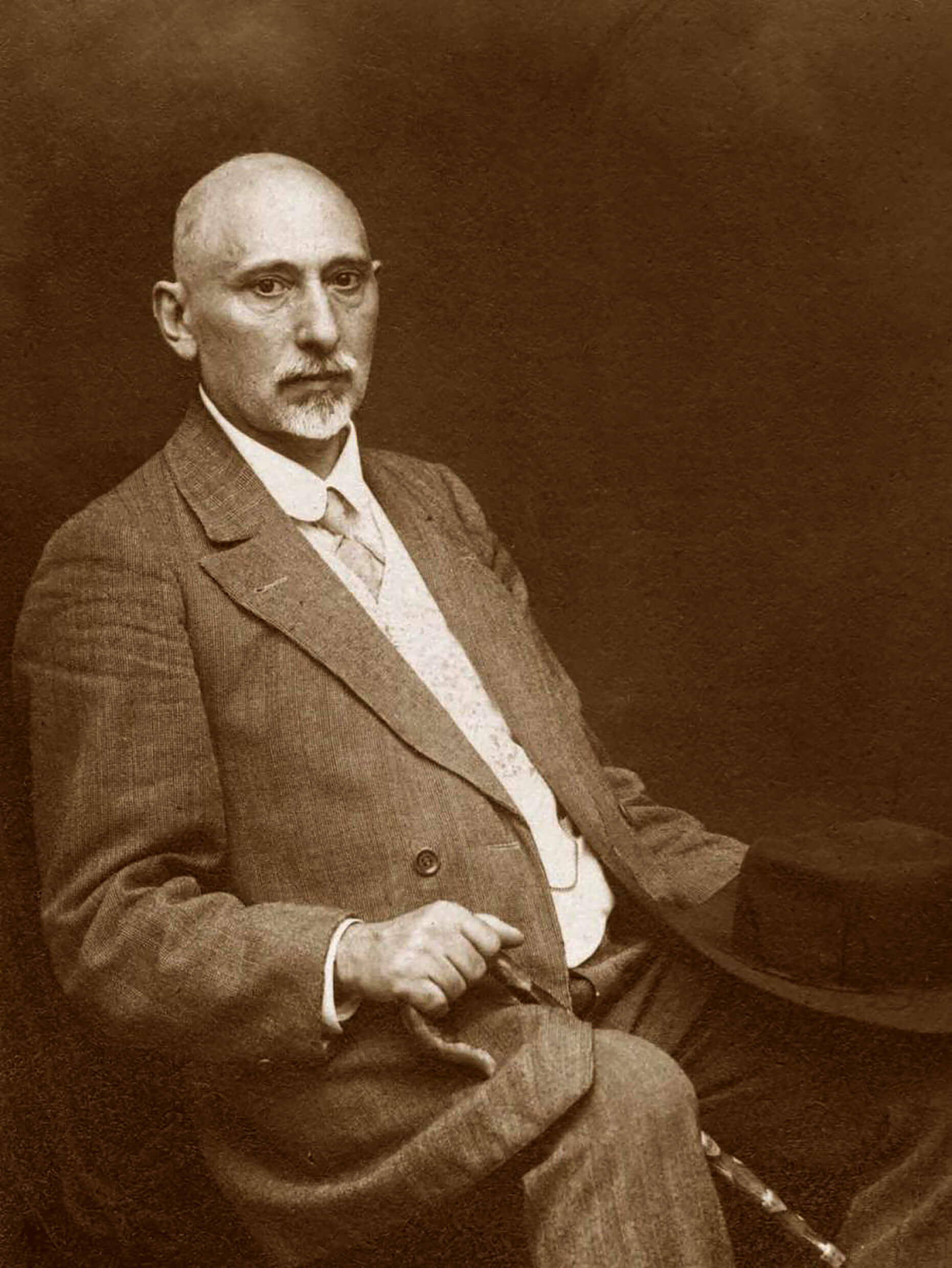
Ekvtime Takaishvili
Excavations revealed that Vani served as the principal political, administrative, and religious center of "Golden Colchis" for nearly the entire first millennium BC – from the 8th to the 1st century BC. Initially, artifacts unearthed at the site were housed in the Simon Janashia State Museum in Tbilisi. Each excavation season, the expedition yielded numerous unique findings, underscoring the urgent need for a local museum. At first, a small storage museum-like facility with was established on the expedition base itself. Later, a modest exhibition space was created in a small building in the regional center. In the 1970s, renowned architect and expert in ancient architecture Giorgi Lezhava designed a museum building project that harmonized beautifully with the landscape of the Vani Archeological site. Modeled after the ancient temple, the building’s location – chosen by Lezhava and Otar Lordkipanidze – was set opposite Akhvlediani Hill. However, the completion of the project took many years to come to fruition.
The construction of the Vani Archeological Museum was sparked by a fortunate coincidence – an event I witnessed personally. In 1981, the then head of the state, Eduard Shevardnadze, visited Vani to view the ruins of the ancient city and the discoveries recently made there. As he was leaving, he asked what they needed. The expedition leader responded modestly, saying that a proper building was needed to house the archeological materials. Shevardnadze’s reply was decisive: "Vani needs a real museum." This statement led to the decision to build an archeological museum at a time when the construction of new museums in the Soviet Union was officially prohibited by the central government. Naturally, even at the design phase obstacles were encountered. Fortunately, architect Giorgi Andronikashvili, then working in the government, recalled that a design for the Vani Museum already existed, created by the late Giorgi Lezhava. His design was revived, and construction of the museum began soon after. The project also received strong support from the local leadership of the Vani region, particularly under the guidance of Nodar Andriadze. The exhibition’s scenography was crafted by architect-artists Guram Kipiani and Nodar Amashukeli, based on the scientific concept developed by Otar Lordkipanidze. The result was a rare and exceptional exhibition for the Soviet era, brought to life through the active participation of each expedition member, along with the invaluable help of local volunteers.
The Vani Archeological Museum opened in 1985 as the first museum preserve in the region. It was equipped with storage facilities, a primary restoration and photo laboratory, a library, and a conference hall. From the date of its opening, the museum was led by historian Omar Gabunia, a native of Vani.
From the outset, the museum transformed Vani into a vibrant destination. Archeological findings were not only processed and studied immediately upon discovery, but many were also made accessible to the public shortly thereafter. Among the most notable discoveries were the rich contents of Tomb No. 19, unearthed in 1987, which included outstanding examples of ancient goldsmithing. The discovery of a bronze statue of a young man in 1988 was another noteworthy find that attracted vast international attention. In 2015, the statue featured prominently in the exhibition Power and Pathos: Bronze Sculpture of the Hellenistic World, showcased at the Palazzo Strozzi in Florence and the J. Paul Getty Museum in Los Angeles.
Today, this remarkable statue remains a centerpiece of the Vani Museum’s extensive and unique collection of Hellenistic bronzes. Like many renowned artworks named after their place of discovery, this statue is now known as “Vasiko” – named in honor of Vasil Gabunia, the owner of the land on which it was found.
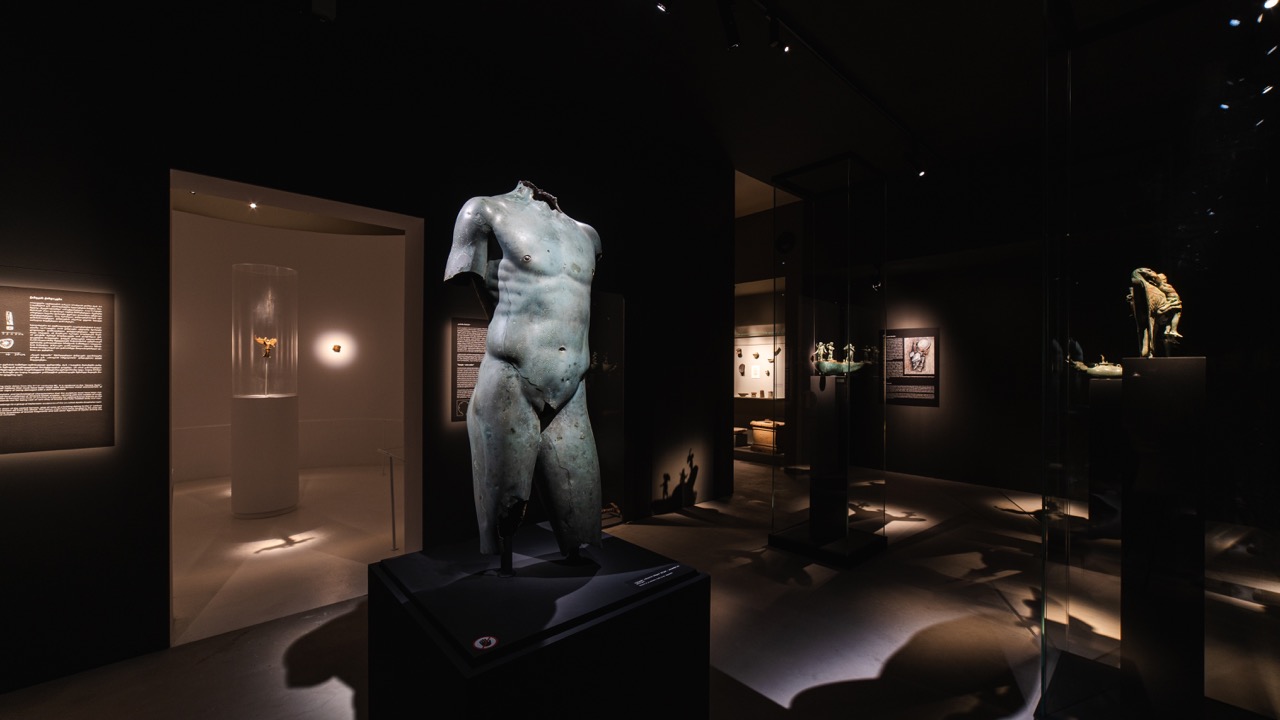
Vani Archeological Museum. Photo: Tbel Abuseridze. National Geographic Magazine, Georgia
Soon after its establishment, the Vani Archeological Museum became a permanent venue for symposia focused on the history of the Black Sea region – gatherings that consistently attracted leading scholars from around the world. With its welcoming atmosphere and academic significance, the museum quickly became a favored meeting place for international researchers. The Vani Museum survived not only the hardships of the 1990s, but also the challenges facing many museums in the 21st century.
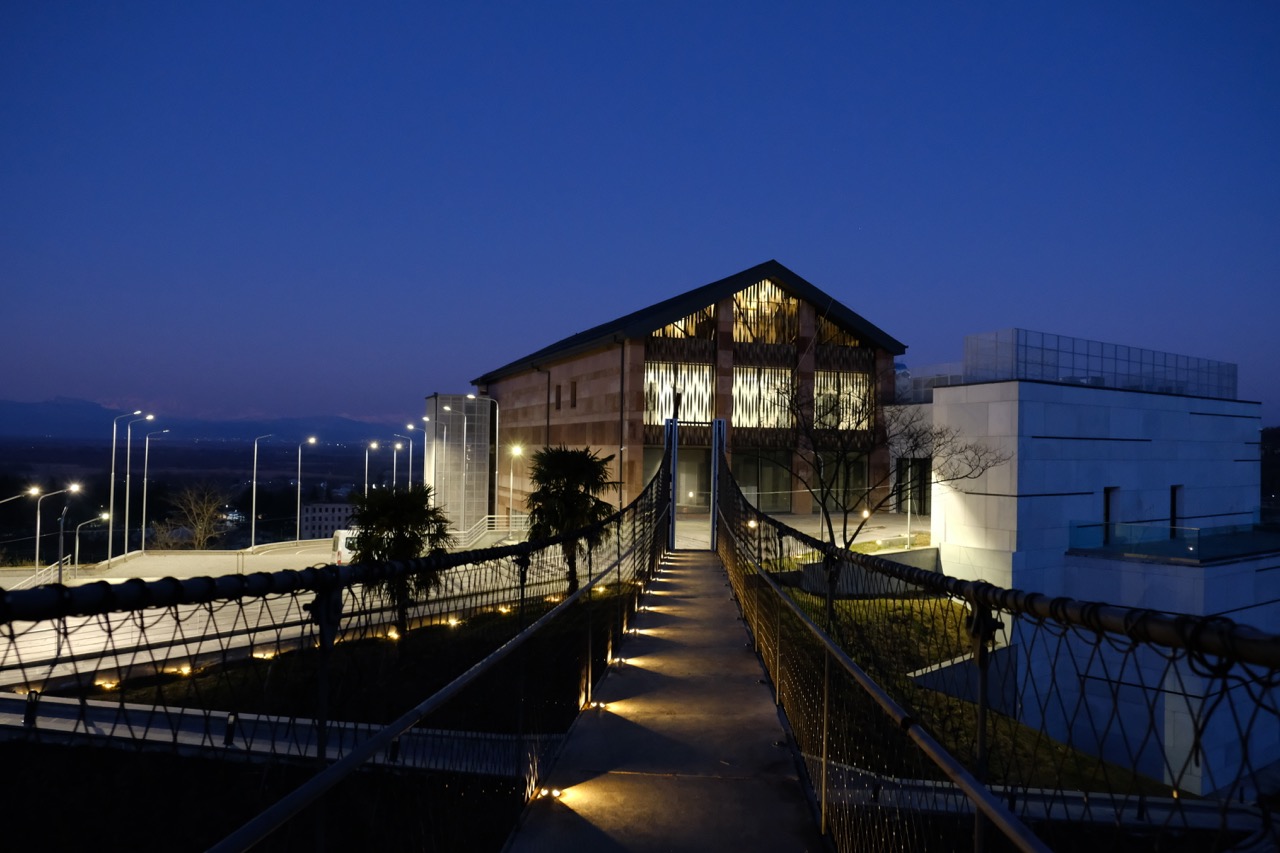
Vani Archeological Museum. GNM EMYA. 2023
The renovation of the Vani Museum was prioritized as part of the broader rehabilitation of regional museums within the Georgian National Museum – the country’s principal museum network. In parallel, archeological excavations in Vani continued under the leadership of Darejan Kacharava, who has directed the expedition since 2002, yielding a series of extraordinary discoveries. Among the most notable findings were the inventories of two “golden” tombs unearthed in 2003–2004, and the unique bronze artifacts discovered in 2007. These discoveries became central features in international exhibitions organized by the Georgian National Museum, and were showcased in many of the world’s leading institutions, among them the Antikensammlung in Berlin, the Museum of Asian Art in Nice, the Musée de la Monnaie in Paris, the Arthur M. Sackler Gallery of the Smithsonian Institution in Washington, New York University’s Institute for the Study of the Ancient World, the Museum of Fine Arts in Houston, the Fitzwilliam Museum in Cambridge, the Benaki Museum in Athens, the Museum of Mediterranean and Near Eastern Antiquities in Stockholm, the Drents Museum in Assen, the Archeological Museum of Seville, the Museum of the Imperial Forums in Rome, Palazzo Strozzi in Florence, the Liebieghaus in Frankfurt, the J. Paul Getty Museum in Los Angeles, the National Gallery of Art in Washington, the Cité du Vin in Bordeaux, and the Museum of European and Mediterranean Civilizations (MuCEM) in Marseille.
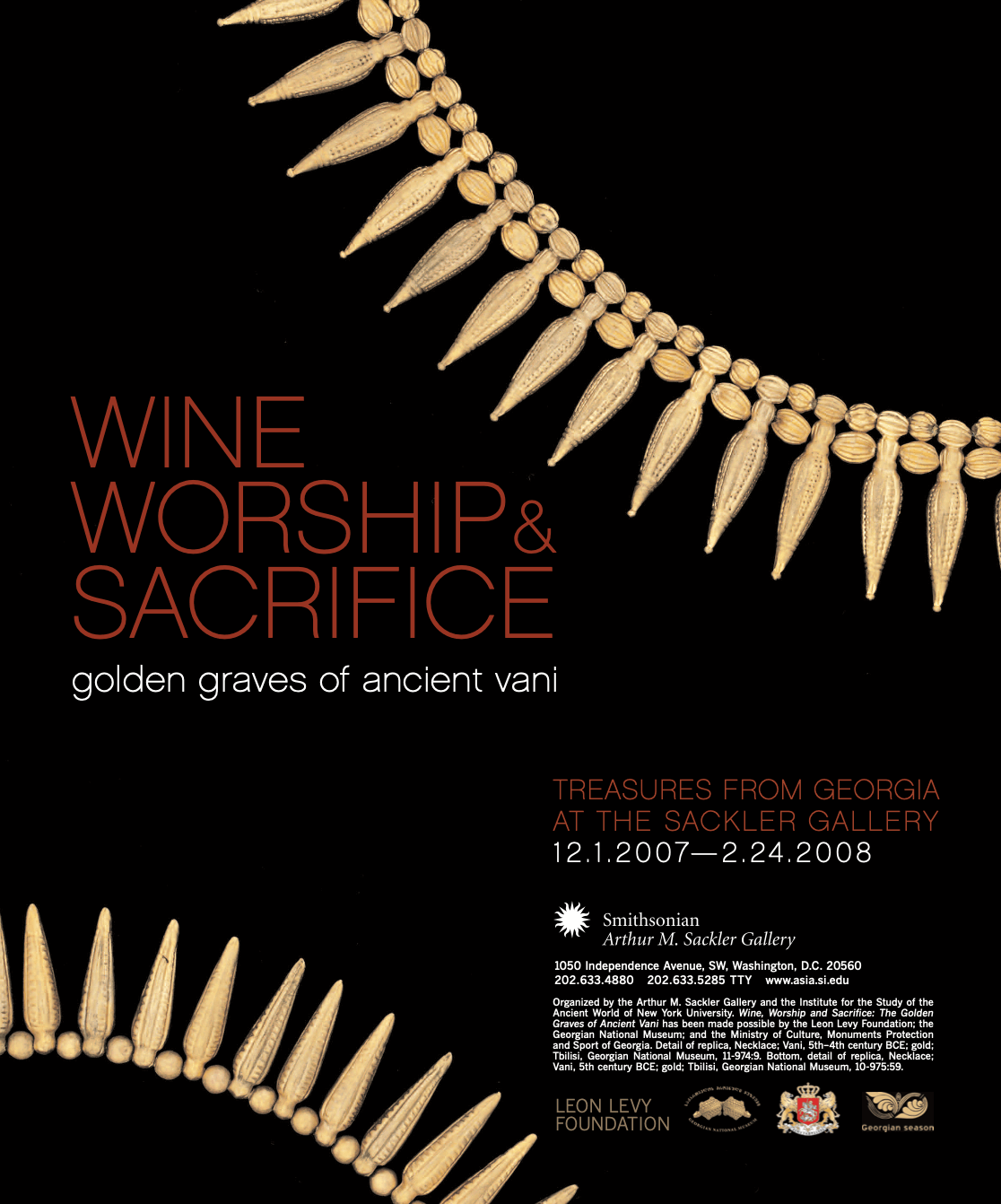
Wine Worship & Sacrifice. Golden Graves of Ancient Vani. Exhibition poster. 2008
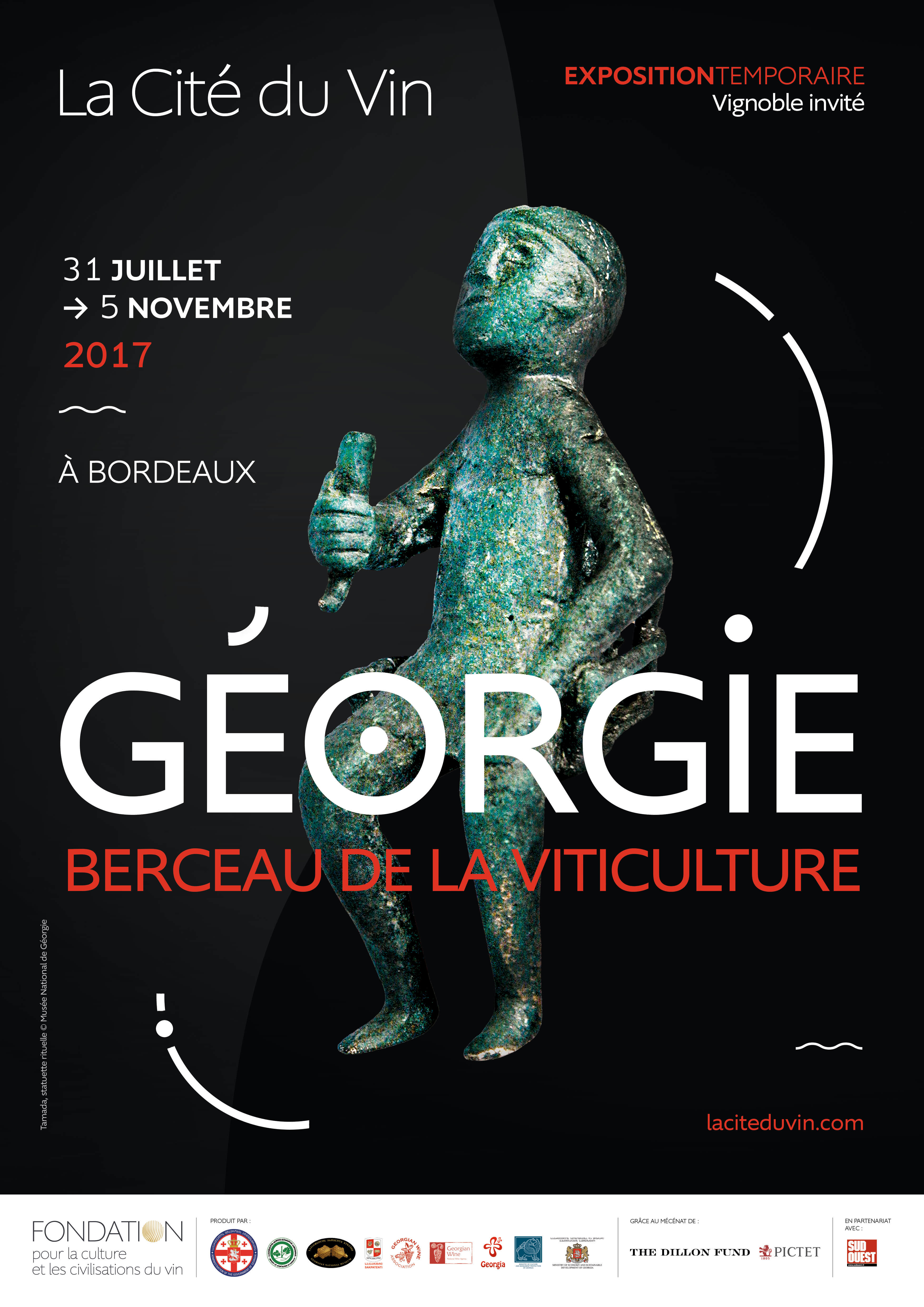
Géorgie, Berceau de la Viticulture. Exhibition poster. 2017
The experience gained through organizing international exhibitions played a vital role in shaping the future of the Vani Museum and its holding of new exhibitions. It also paved the way for active collaboration with leading scientific institutions. A prominent example of such cooperation is the joint study of bronze censers and other temple artifacts from the "treasure" collection, conducted at the J. Paul Getty Center under the leadership of Georgian Professor Nino Kalandadze.
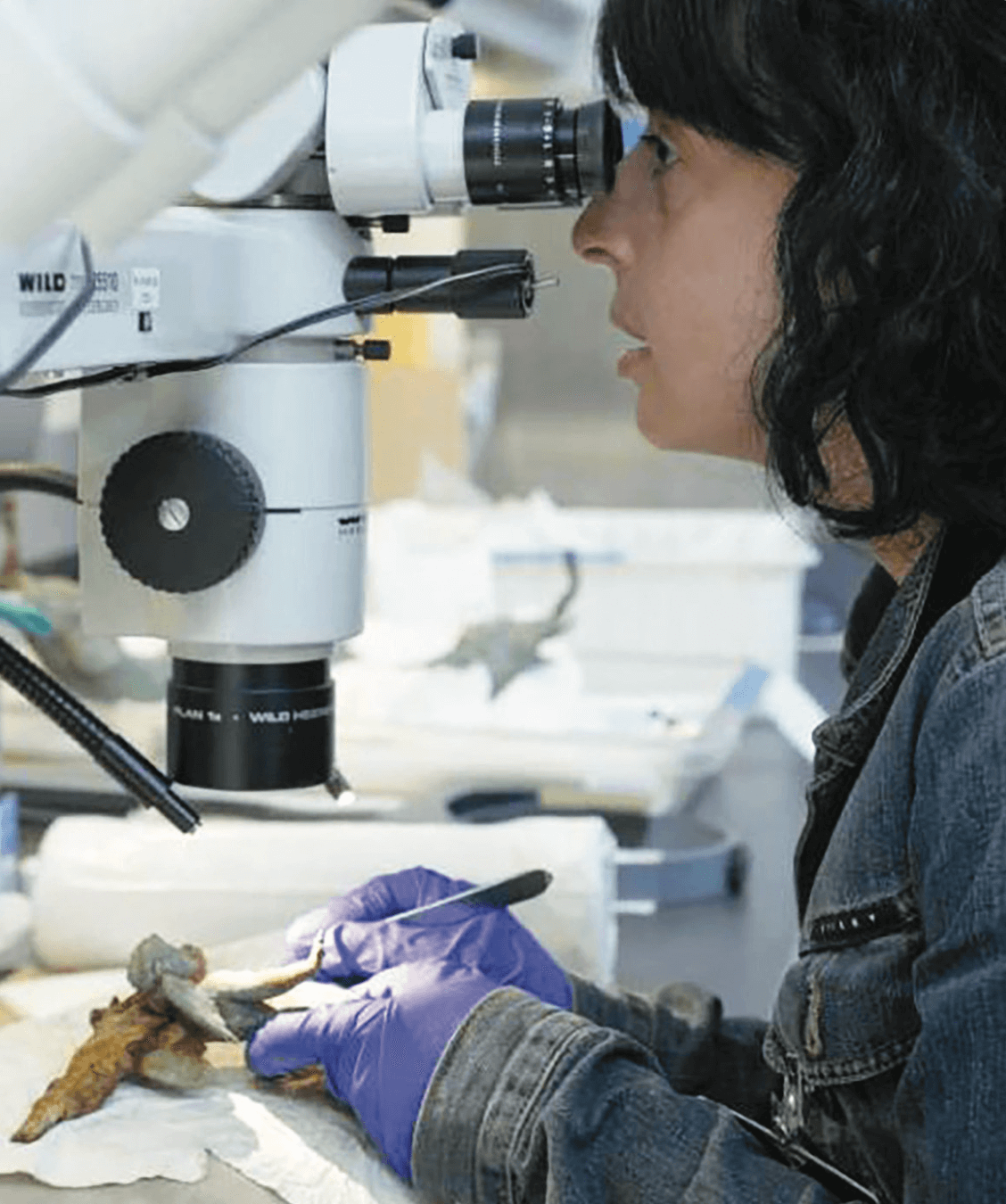
Professor Nino Kalandadze
In 2007, the museum was renovated and brought to fully modern standards. The primary challenge was to preserve the building’s original appearance while adapting it to contemporary requirements – a task successfully carried out by the architectural company Ellis Williams Architects, led by Dieter Pfannenstiel. A team from the Georgian National Museum, headed by Zaza Iashvili, managed the work on-site, while Mamuka Sagharadze directed the infrastructure development.
French designer Lina Maria Lopez, already familiar with the museum’s collection through her work on exhibitions in France, was invited to design the new scenography. Thanks to the modernized infrastructure, the museum was able not only to expand its displays, but also to introduce innovative elements into the exhibition, greatly expanding the frames of the exhibits. The varied installation process was coordinated by Salome Guruli. The scientific concept for the renewed exhibition, authored by Nino Lordkipanidze, is based on the traditions of the old museum. Special contributions were made by the exhibition curators, Darejan Kacharava and Marine Pirtskhalava. The members of the archeological expedition, along with all staff of the Vani Museum, were actively involved in the museum’s process of renewal.
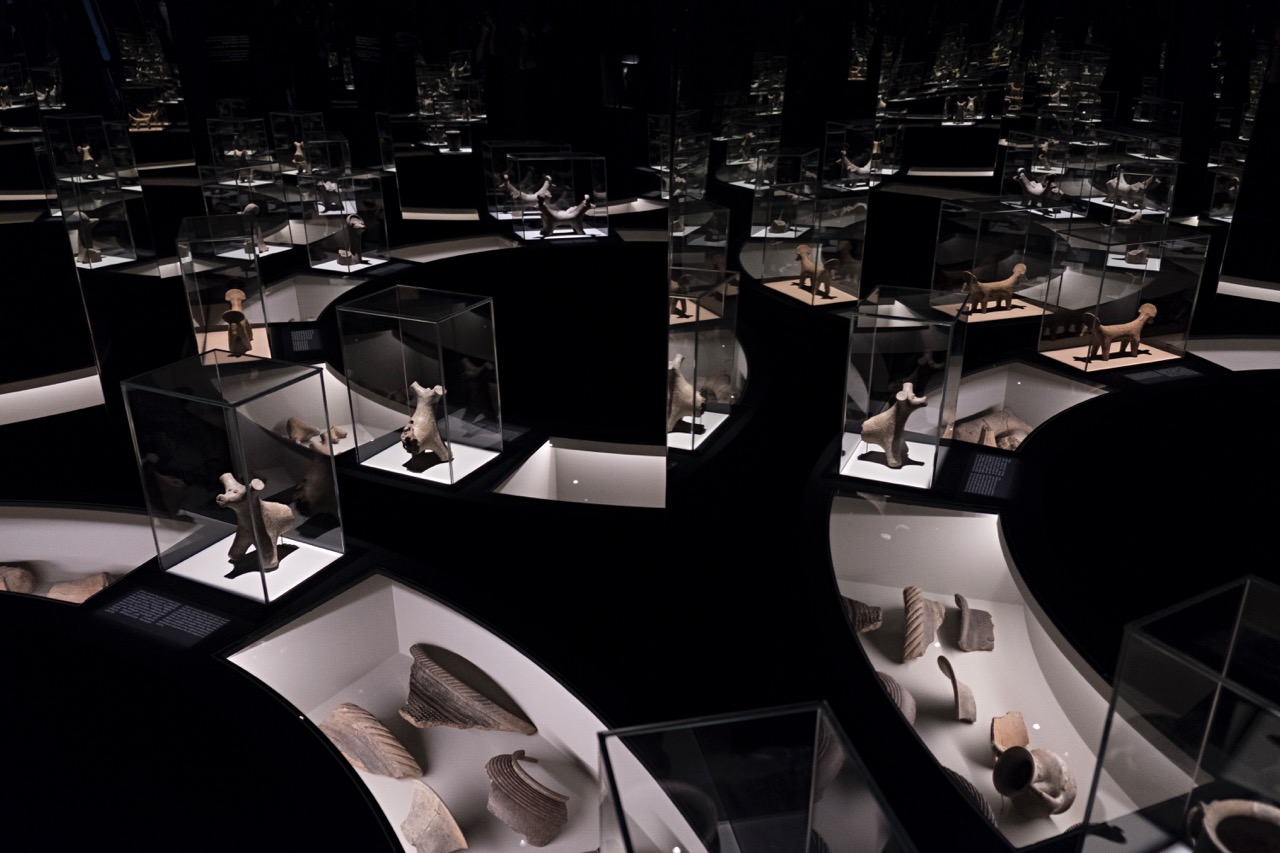
Vani Archeological Museum. Photo: Annie Davarashvili. Georgian National Museum
The permanent exhibition of the Vani Archeological Museum is housed in 10 exhibition halls across two floors, and presents all four stages of the eight-century history of Vani – the political, administrative, and religious center of the mythical land of the Golden Fleece, the Kingdom of Colchis. Through scenography meticulously aligned with the scientific concept and enhanced by modern installations, the diverse archeological material engages in an ongoing dialogue with both the ruins of the ancient city itself and the Greek written sources. Presented in chronological order, the exhibition brings to life the defining elements that established Vani as the most significant city of the Colchian Kingdom.
These include:
- The so-called “Country of Vani” during the height of the Colchian Bronze Culture in the 8th–7th centuries BC.
- A sacrificial square from the same era, notable for its use in elaborate ritual practices.
- A wooden temple dating to the 6th–5th centuries BC.
- The “golden” tombs and principal burial grounds of the Colchian nobility from the 5th–4th centuries BC.
- A remarkable ritual site from the 3rd century BC, where anthropomorphic bronze and iron statues, adorned with gold jewelry, were “buried” in place of humans – a practice that has no parallel outside of Vani.
- A temple city from the 2nd–1st centuries BC, which also served as a major center of metallurgical knowledge and was presumably destroyed by invaders drawn by its great wealth.
Today, the Vani Museum is equipped with a state-of-the-art scientific laboratory for restoration and conservation, enabling complex research on artifacts to begin right at the moment they are discovered in the field. The museum is also home to the Leon Levy and Shelby White Library, which offers a rich collection of scholarly literature, while a newly designed auditorium provides an ideal space for public engagement and knowledge sharing. The museum’s collections are curated according to the latest international standards, and its public spaces – including a café, a shop, and open verandas with panoramic views of the ruins of the ancient city, the Caucasus Range, and Mount Khvamli – offer an inviting environment for both tourists and local visitors to relax and enjoy their time in.
_Large.jpeg)
Vani Archeological Museum. "Life and Death – The Great Pompeii". Photo: Annie Davarashvili. Georgian National Museum
Symbolically, the first temporary exhibition hosted by the renovated Vani Museum was Life and Death – The Great Pompeii. This exhibition marked the first time that a diverse array of archeological material from the Pompeii Archeological Park was presented in Georgia. Visitors were offered a unique opportunity to experience, side by side, the grandeur and tragic fates of two ancient cities with entirely different functions – Pompeii and Vani. Vani first earned the title “Georgian Pompeii” through Otar Lordkipanidze’s book, published in France in 1995, which introduced the site to a broader international audience.
In 2024, the Vani Museum hosted the exhibition Etruscan World, showcasing artifacts of Etruscan culture from leading museums in Italy.
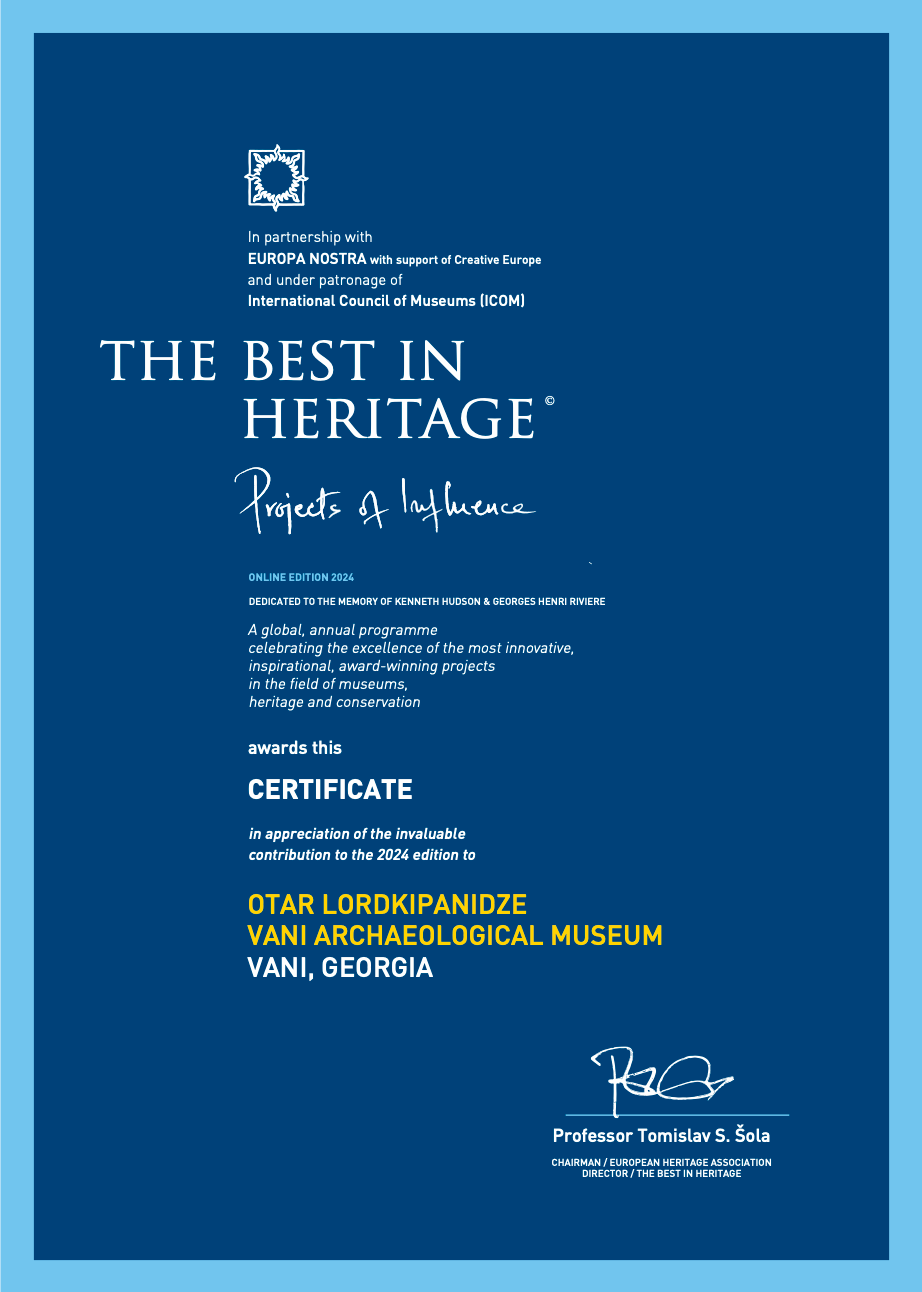
Certificate in appreciation of the invaluable contribution to the 2024 edition to Otar Lordkipanidze, Vani Archaeological Museum
The Otar Lordkipanidze Vani Archeological Museum, which entered a new chapter in 2020, received one of the highest honors at the European Museum of the Year Awards 2023 (EMYA 2023): The Silletto Prize for ‘Public Participation and Engagement.’ In 2024, the museum was further recognized as The Best in Heritage – Project of Influence.
Archeological excavations and the development of the museum in Vani are ongoing.